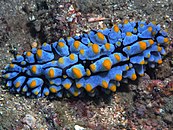Main Page
|
Welcome to The free species directory that anyone can edit. It covers Animalia, Plantae, Fungi, Bacteria, Archaea, Protista and all other forms of life. So far we have 771,934 articles Wikispecies is free, because life is in the public domain! You can also check us out on Twitter: @Wikispecies We also have an IRC Channel #wikispeciesconnect |
Taxon Navigation
|

|

|

| |
| Michotamia aurata | Heliconia angusta | Balistapus undulatus | Chroicocephalus ridibundus |

|

|

|

|
| Aepyceros melampus | Phyllidia varicosa | Pelomyxa palustris | Pseudotrapelus sinaitus |
Explore Wikispecies
Collaboration with ZooKeys A collaboration between Wikispecies and ZooKeys has been announced. PhytoKeys also joined the collaboration in November 2010. Images of species from ZooKeys and PhytoKeys will be uploaded to Wikimedia Commons and used in Wikispecies.
Distinguished authorMary Agnes Chase Mary Agnes Chase, née Merrill, was an American botanist who worked at the U.S. Department of Agriculture and the Smithsonian Institution. She is considered one of the world's outstanding agrostologists and is known for her work on the study of grasses, and also for her work as a suffragist. Chase was born in Iroquois County, Illinois and held no formal education beyond grammar school. That aside, she made significant contributions to the field of botany, authored over 70 scientific publications, and was conferred with an honorary doctorate in science from the University of Illinois. She specialized in the study of grasses and conducted extensive field work in North- as well as and South America. Her Smithsonian Field Books collection from 1897 to 1959 is archived in the Smithsonian Institution Archives. In 1901, Chase became a botanical assistant at the Field Museum of Natural History under Charles Frederick Millspaugh, where her work was featured in two museum publications: Plantae Utowanae (1900) and Plantae Yucatanae (1904). Two years later, Chase joined the U.S. Department of Agriculture (USDA) as a botanical illustrator and eventually became a scientific assistant in systematic agrostology (1907), assistant botanist (1923), and associate botanist (1925), all under Albert Spear Hitchcock. Chase worked with Hitchcock for almost twenty years, collaborating closely and also publishing, for instance The North American Species of Panicum (1910). Following Hitchcock's death in 1936, Chase succeeded him to become senior botanist in charge of systematic agrostology and custodian of the Section of Grasses, Division of Plants at the United States National Museum (USNM). Chase retired from the USDA in 1939, but continued her work as custodian of the USNM grass herbarium until her death in 1963. She was an Honorary Fellow of the Smithsonian Institution (1959) and Fellow of the Linnean Society of London (1961). Agnesia is named in her honour (a monotypic genus of herbaceous South American bamboo in the grass family). Chase experienced discrimination based on her gender in the scientific field, for example, being excluded from expeditions to Panama in 1911 and 1912 because the expedition's benefactors feared the presence of women researchers would distract men. During World War I, Chase marched with Alice Paul and was jailed several times for her activities. In 1918, she was arrested at the Silent Sentinels rally picketing the White House; she refused bail and was held for 10 days, where she instigated a hunger-strike and was force-fed. The USDA accused her of "conduct unbecoming a government employee," but Hitchcock helped her keep her job. Chase was also an active member of the National Association for the Advancement of Colored People (NAACP). See also: Distinguished authors of previous months. |
Species of the monthNorth Atlantic Right WhaleSome facts on this marine mammal: First described: By the Danish botanist and zoologist Otto Friedrich Müller in 1776. Type locality: Norway, Finnmark, Nord Kapp (vicinity of North Cape). Body length: 13–16 m (43–52 ft). Females are generally larger than males. Weigth: 40,000 to 70,000 kg (44 to 77 short tons). Distribution: Western United States, Bermuda and Canada, to Greenland, Iceland, Norway, Portugal and Spain. Earlier they were also found at the Faroe Islands, the United Kingdom, France, Ireland, Morocco and Western Sahara, but it's uncertain whether these populations are still extant. Diet: The North Atlantic Right Whale mainly feed on copepods and other small invertebrates such as krill, pteropods, and larval barnacles. Conservation status: Critically Endangered (January 1, 2020). Surviving number: 200–250 mature individuals; population declining.
See also: Species of previous months |
|
Wikispecies is hosted by the non-profit Wikimedia Foundation, along with several other multilingual and free-content projects:
|

